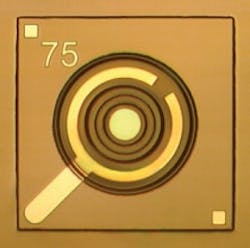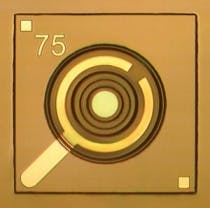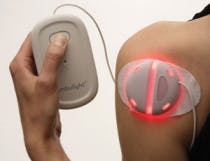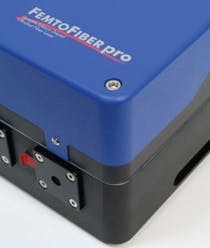Components Systems Products
Compiled By Barbara Goode
Back-illuminated, low noise NIR APDs
The Deschutes BSI series of backside-illuminated avalanche photodiodes (APDs) promises superior responsivity and lower capacitance compared with frontside-illuminated APDs. Typical responsivity is greater than 1.0 A/W at 1550 nm and 0.73 A/W at 1064 nm, and operating gain is 3 to 20. These InGaAs/InAlAs APDs are available on ceramic submounts with a co-mounted temperature sensor, and have been designed for low excess noise, with a design exploiting the nonlocal behavior of impact ionization.
Voxtel Inc., Beaverton, OR, www.voxtel-inc.com
Ambulatory phototherapy for skin cancer
Ambulight PDT, which received CE Mark approval in 2009, is claimed to be the first product to use a small, disposable, wearable, light-emitting bandage to deliver photodynamic therapy (PDT) directly to a skin lesion. Designed for the treatment of non-melanoma skin cancer, it works in conjunction with a prescribed pharmaceutical cream, and enables patients to continue with their normal daily routine when undergoing PDT treatment. Pilot clinical trials indicate this treatment method involves less pain than conventional techniques while producing an equivalent outcome.
Ambicare Health, St. Andrews, Scotland, www.ambicarehealth.com
3D photoacoustic tomography system
The first commercial photoacoustic computed tomography (CT) scanner, Nexus 128, provides simple, noninvasive quantification of tumor vasculature and other physiological parameters–without contrast agents–for in vivo preclinical research. The system's name represents the convergence of light and sound: A detector array with 128 acoustic receiver elements is arranged in a patented geometry. Nexus 128 generates multispectral, 3D images of vasculature and hemoglobin concentration in less than 2 min, and volumetric scans in as little as 12 s.
Endra Life Sciences, Ann Arbor, MI, www.endrainc.com
All-fiber ultrafast lasers
The FemtoFiber pro ultrafast laser promises the highest peak power of its class and hands-off operation for life sciences applications including spectroscopy and optical coherence tomography. The basic IR unit emits at 1560 nm with a pulsewidth well below 100 fs and average power exceeding 350 mW; standard repetition rate is 80 MHz, but 40 MHz and custom frequencies are also available. The NIR model is a second harmonic system at 780 nm, while the SCIR model is an octave-spanning supercontinuum laser ranging from 980 to 2200 nm. A saturable absorber mirror (SAM) ensures self-starting and stable modelocking under all laboratory conditions.
Toptica Photonics Inc., Victor, NY, www.toptica.com
More Brand Name Current Issue Articles
More Brand Name Archives Issue Articles



